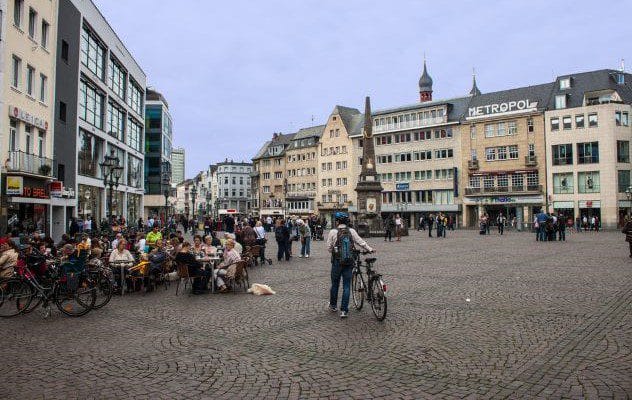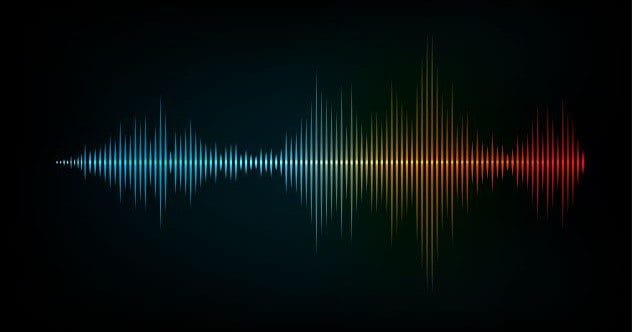Technology and art have always been intertwined. Advances in materials open doors to new artistic mediums or enhance existing ones. Recently, engineers and scientists across various fields have used their expertise to create unprecedented musical compositions.
Today, we can listen to music composed *by* Mother Nature, rather than simply inspired by it. The melodies hidden within mathematics and statistics are now as accessible as Mozart’s sonatas. Here are ten examples of how science and technology have been transformed into music.
Seismic Activity
Yellowstone National Park in Wyoming experiences 1,500 to 2,500 earthquakes annually, captured by fifty seismographs. This constant seismic activity inspired Dr. Domenico Vicinanza, a composer and physicist, to create a unique concert for a conference in May 2023. He developed a computer program that transforms seismic data—traditionally a needle tracing on paper—into real-time music.
The program converts the amplitude of vibrations into musical pitch, with larger vibrations represented by higher notes. This method is more than a novelty; Dr. Vicinanza believes it can help scientists analyze seismic patterns. He hopes this fusion of science and art will broaden the appeal of scientific understanding.
The Solar System
Before seismic activity, Dr. Vicinanza transformed 37 years of data from NASA’s Voyager probes into orchestral and piano music in 2014. The result is surprisingly cheerful, reminiscent of Jupiter from Holst’s “The Planets” or *Star Wars*, rather than the grandeur of Strauss’s “Also Sprach Zarathustra.”
Dr. Vicinanza used 320,000 hourly proton count measurements from both spacecraft to create interweaving melodies, allowing listeners to perceive patterns and changes in the data.
The Southern Ring and Carina Nebulae
In 2022, scientists and musicians translated images from the James Webb telescope into sound, aiding visually impaired individuals. Features like star location, color, size, and brightness were assigned musical parameters, resulting in distinct compositions: the Carina Nebula’s pleasantness contrasts with the Southern Ring’s dissonance.
The team also created a piece based on the atmosphere of the hot gas giant WASP-96 b. The goal is to make these discoveries accessible to a wider audience through the emotional power of music.
Molecules
Molecular biologist Mark Temple discovered that human DNA bases easily mapped to musical notes, aiding his cancer research. These short melodies were more effective than visual displays.
Temple developed software to convert data into sound, adding instruments like guitars and drums to transform viruses and hormones into music. He distinguishes “musification” from “sonification,” where the latter aims to inform without creative input. During the pandemic, he collaborated to create a rock song from the COVID-19 virus, enhancing scientific communication.
The City of Bonn, Germany

Filmmakers often face copyright issues when using music. The University of Bonn took a unique approach, partnering sound design students to create original music for teaching videos.
Students recorded city sounds, like beer bottles popping and birds tweeting, turning them into samples. Each student captured 20 sounds, which were then crafted into full tracks for university use, sidestepping copyright concerns.
A Philosopher’s Brainwaves
“All brains are musical,” believes Dan Lloyd, a philosophy professor who tested this idea by capturing the brain activity of philosopher Daniel Dennett using fMRI in 2016.
Lloyd sonified 8,000 3D brain images using familiar instruments. He believes this approach makes complex data easier to interpret, potentially leading to an “fMRI stethoscope” for diagnosing mental illnesses. Currently, only Daniel Dennett’s brain symphony is available for listening.
The Northern Lights
Alaskan composer Matthew Burtner, commissioned by the BBC, used a low-frequency recorder to capture the Northern Lights’ sounds. He grew up hearing tales about these sounds and sought to uncover their mystery.
The recorder, sensitive to electromagnetic signals, captured snapping and crackling sounds. Burtner reproduced these using electronic synthesizers and mapped them onto musical instruments. His composition, “Auroras,” aims to sonically represent the experience of seeing the Northern Lights on a clear night.
Lamborghini Engines
In 2022, Lamborghini’s sound engineers teamed up with music producer Alex Trecarichi to explore a captivating question: What songs would a Lamborghini engine become if turned into music? They captured vibrations from V8, V10, and V12 engines across their spectrum.
The data, measured in hertz, was mathematically broken down into musical subcomponents. Rather than composing original pieces, the team produced three “Engine Songs” playlists, each matching the sounds of a specific engine.
Polestar 2 Car Parts
German musician Moritz Simon Geist built robots from Polestar 2 electric car parts to create sound samples, addressing the lack of car sounds in music. He recorded changes in the car’s electromagnetic field and extracted sounds from electric components.
Geist arranged these samples into an original piece, “Sound of the Soul,” using the car parts like an orchestra. The samples were also released for public use, encouraging further musical creativity.
Climate Change
Scientists leverage sonification to make complex data intuitive. In 2018, a team created a piece based on 1,200 years of climate change data, correlating CO2 levels and global temperatures from AD 850 to 2016.
The music illustrates the impact of climate change over time. The piece begins pleasantly but intensifies, resembling an ambulance siren, to convey the urgency of climate change.
These innovative examples demonstrate how science and technology can unlock new musical dimensions, offering fresh perspectives on complex data and inspiring artistic expression.
What do you think of these science-inspired symphonies? Leave your comment below!










